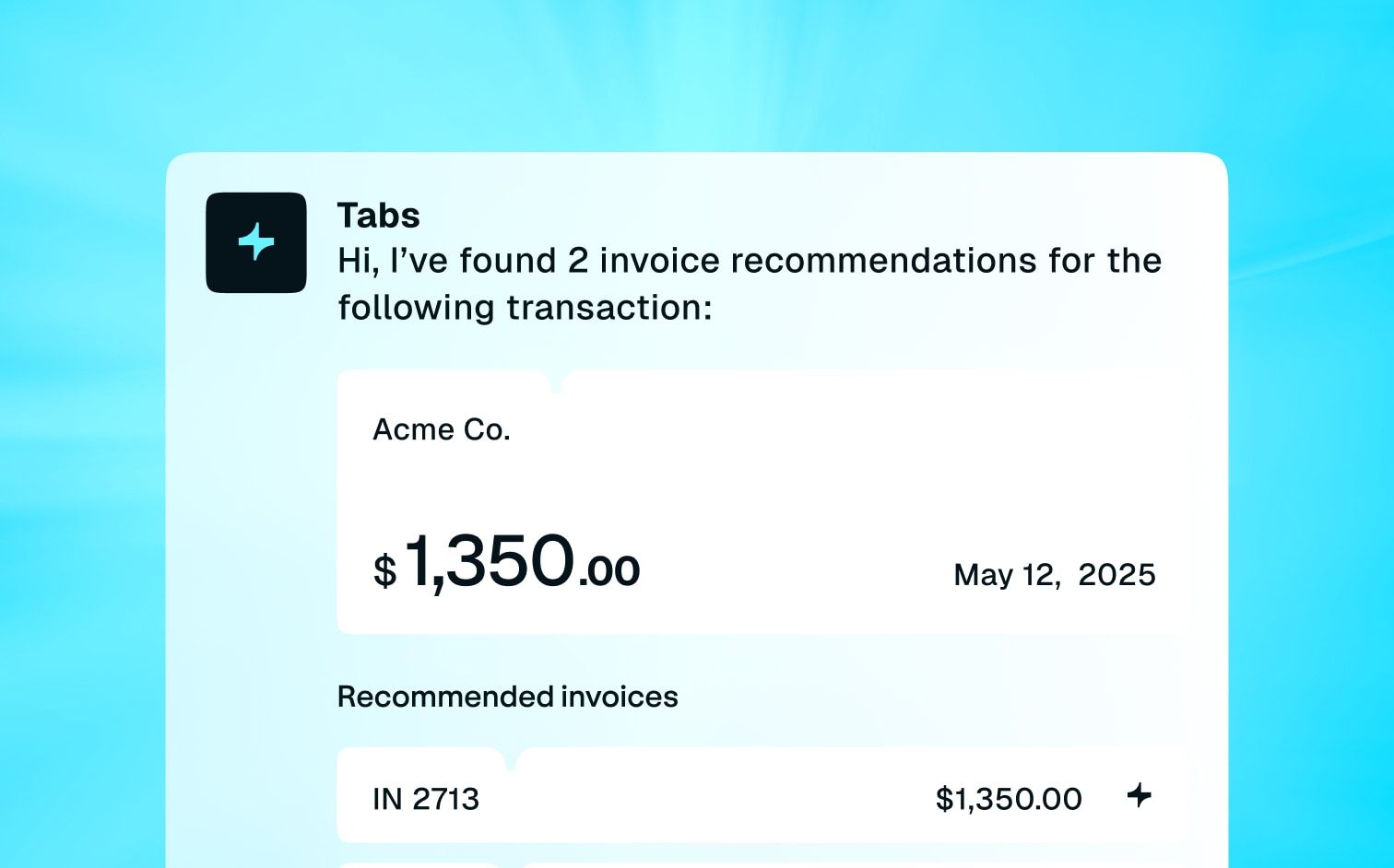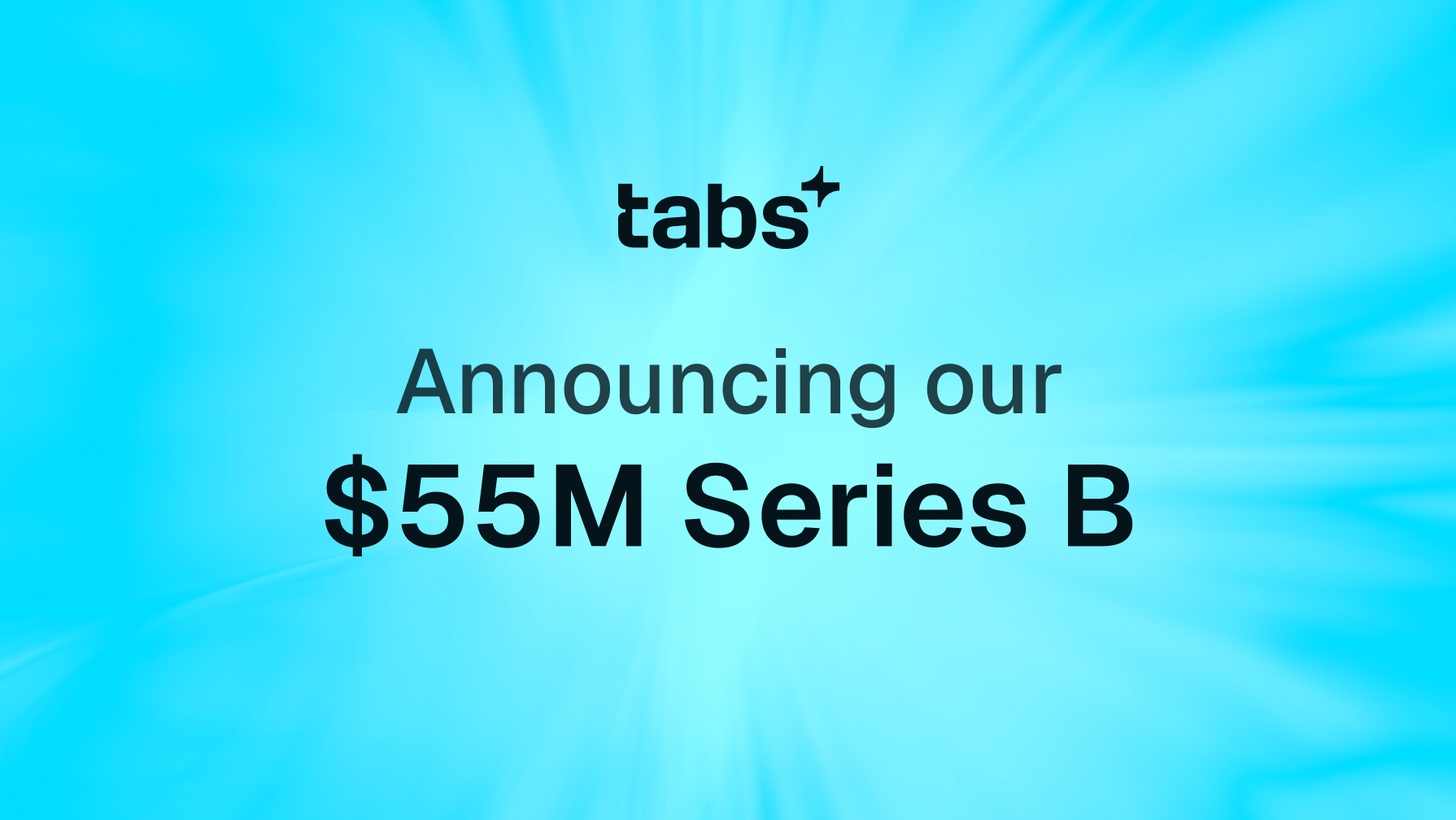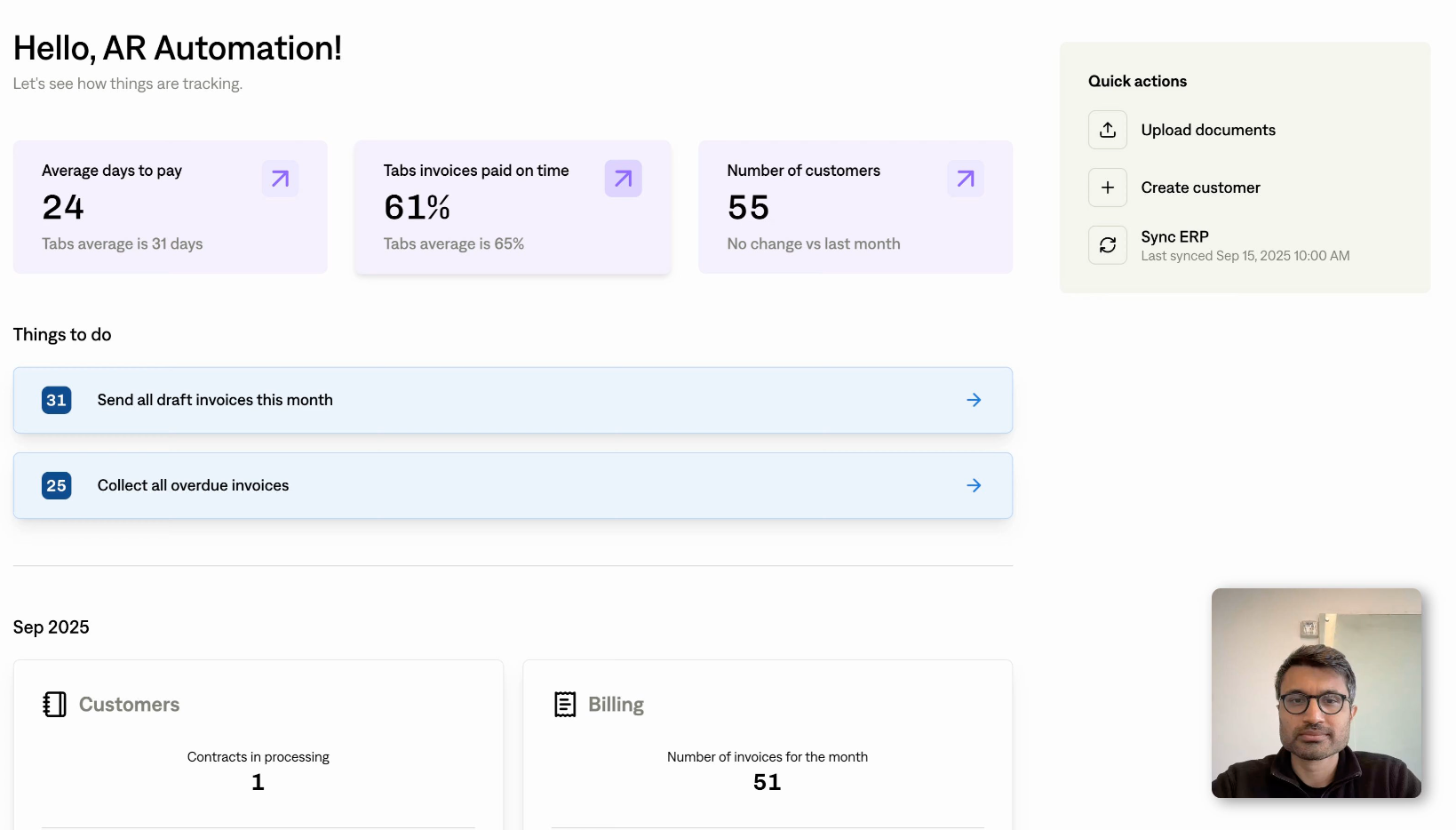When your cash flow is healthy, your business thrives. Effective communication is key in this process, especially when collecting your payments on time.
Dunning is fundamental to that communication, as it’s the process businesses use to remind customers of overdue payments. But it’s not just about sending notices. It’s about maintaining cash flow, building customer relationships, and ensuring your business’s financial health. Integrating dunning into your AR management is essential for keeping operations steady and preventing revenue loss.
This article explores each phase of the dunning process, from crafting initial reminders to sending final notices. Learn communication techniques, the use of technology to enhance the process, and the importance of legal and ethical considerations. Find out how to analyze and improve your dunning strategies to keep your business moving forward.
The Dunning Process
The dunning process is a critical component of accounts receivable management, precisely guiding overdue invoices from issuance to payment. Review each step to understand how effective communication can enhance payment collection:
- Invoice Issuance: The journey begins when you send an invoice to a customer. This document clearly details the charges and sets the payment deadline. It’s your first touchpoint and sets the tone for future interactions.
- Initial Reminder: The customer receives the first reminder if the payment deadline passes without action. It reminds them of the missed deadline and requests payment, emphasizing understanding and cooperation rather than demand. Craft the message with care — polite yet clear, designed to gently nudge the customer. This approach helps keep a good relationship while addressing the need for quick payment.
- Follow-Up Reminder: Should the customer overlook the initial reminder, your next communication takes a firmer tone. This follow-up message repeats the payment request but now highlights possible consequences of continued delays, such as interest charges or temporary service holds. The language remains professional but stresses the importance of settling the outstanding amount to avoid disruptions.
- Final Notice: As a last effort before escalating matters, you send a final notice. This message is direct and clear, outlining the serious implications of nonpayment, including potential collection actions or negative credit impacts. While the tone is stern, this notice still expresses willingness to find a resolution, offering perhaps one last opportunity to settle the debt.
Each stage in the dunning process is carefully structured to balance necessity and courtesy. This graduated approach helps protect your cash flow while respecting customer relationships.
Communication Techniques
Communication during the dunning process influences how quickly you collect payments and impacts your ongoing customer relationships. Follow these best practices and tips for crafting messages that prompt payment and positive interactions.
Best Practices for Effective Communication
- Clarity and Conciseness: Make sure the payment details, due date, and any consequences of nonpayment are clear and easily understandable. Avoid jargon or overly complicated language that might confuse the recipient.
- Tone Matters: Always be professional and respectful, even when sending a final notice. Empathy can go a long way toward customer goodwill.
- Personalization: Address the customer by name and reference specific details of their account or previous interactions. This grabs their attention and shows they are valued, not just another entry in your books.
Tips for Crafting Effective Dunning Messages
- Initial Reminder: Start with a reminder that feels like a courtesy, not a demand. Use friendly language such as, “We noticed that the due date for your invoice slipped by! We’re sure it was just an oversight. Could you please check this? We appreciate your prompt attention to this matter.”
- Follow-Up Reminder: If the payment is still due, your next message should increase the importance of payment while still offering help. Example: “We wanted to remind you that your invoice is now 15 days overdue. We understand that things can get busy, and we’re here to help if you need assistance with the payment process.”
- Final Notice: By this stage, be firm but fair. Clearly state the consequences of nonpayment but remain open to resolving issues. For instance: “We need to inform you that your account is 30 days overdue. Please arrange payment immediately to avoid any further action, which might include service disruptions or additional charges. We value our relationship and would like to resolve this matter swiftly.”
Remember, the goal is for the customer to hear you, not fear you. Effective dunning is about being firm but fair so that your customers feel respected throughout the process.
Technological Tools and Automation
In today’s digital age, leveraging technology to enhance efficiency is practically a requirement. Software is crucial in streamlining the dunning process, as they can make communication more effective and tracking more manageable.
Automation tools for dunning integrate with your financial systems to manage and remind customers of their overdue payments. These tools can automate sending initial reminders, follow-up notices, and final warnings based on predefined schedules and triggers. Additionally, they often offer capabilities such as tracking customer responses, recording payment commitments, and escalating issues when necessary.
Benefits of Automation in Dunning
- Consistency and Accuracy: Communications are consistent, error-free, and comply with your company’s standards and policies. Automation reduces human error in billing, ensuring all invoices are correct and that communications contain accurate account details.
- Efficiency and Reduced Administrative Burden: Automation frees your team from repetitive tasks such as manually creating, sending, and tracking payment reminders. This allows them to focus on more complex and strategic activities, like resolving disputes and enhancing customer relationships.
- Scalability: As your business grows, automation can easily scale to handle an increasing volume of transactions without a corresponding increase in overhead costs, supporting your expansion with minimal resource strain.
- Faster Response Times and Increased Customer Satisfaction: Automated systems drastically reduce response times to customer inquiries, enhancing customer satisfaction by keeping timely and informative communications and maintaining a positive experience even during debt collection.
- Enhanced Analytical Insights: Automated tools provide analytics and reporting capabilities that offer deep insights into payment behaviors and customer trends, helping to refine credit policies and forecast cash flows more accurately.
- Regulatory Compliance: Automation helps keep communications compliant with the latest regulations, which reduces the risk of legal issues and helps you adapt to changes in law.
- Cost Savings: Automating the dunning process saves significant costs by reducing manual labor, decreasing time spent on credit management, and minimizing the risk of nonpayment and bad debt.
Case Study: PINATA’s Use of Tabs for Dunning and Email Reminders
PINATA, a fast-growing startup based in New York City, faced challenges with its receivables and invoicing processes as its customer base expanded. The COO, Rob Olson, recognized the need for a more automated approach to keep pace with the company’s growth and selected Tabs as their solution. The key benefits PINATA experienced include:
- Integrated Systems: Using Tabs, PINATA unified its contract and billing information, creating a single source of truth that streamlined invoice creation and payment collection processes.
- Reduced Manual Effort: Uploading a contract as a PDF and automatically parsing all key terms eliminated the need for manual data entry and coordination with outsourced accounting services.
- Driving Down DSO: Implementing Tabs for dunning and email reminders is a strategic move to reduce their Days Sales Outstanding (DSO) metric. Automating these reminders ensures timely notifications and follow-ups, which accelerates payment collections.
Tabs offers ease of implementation and significant time savings and adapts to changing business needs without extensive reconfiguration. For PINATA, using Tabs to automate dunning processes was critical in its strategy to drive down DSO, ultimately enhancing its financial operations and supporting continuous growth.
Legal and Ethical Considerations
Navigating the legal and ethical aspects of the dunning process is necessary for compliance and upholding your company’s integrity. Familiarizing yourself with the key regulations and ethical standards will protect your business and nurture positive customer relationships.
Here are a few regulations to review:
- Fair Debt Collection Practices Act: In the U.S., this act sets guidelines on how you can collect debts, stipulates the appropriate times to contact debtors, defines the language you should use, and identifies the allowable ways to communicate. Verify that your dunning practices align with these requirements to avoid legal repercussions.
- General Data Protection Regulation (GDPR): For businesses operating in or dealing with customers in the European Union, GDPR provides strict rules on data privacy and security, including how customer information is collected, stored, and used during the dunning process.
- Local and State Laws: Depending on your location, additional local or state regulations may govern credit and collections practices. Be aware of these and incorporate them into your dunning strategy.
Ethical Obligations
As for ethical standards, your organization should lead with transparency, respect, and confidentiality.
Clearly communicate your billing and credit terms at the start of any customer relationship. Transparency in your policies and procedures helps build trust and avoids misunderstandings that could lead to disputes.
Additionally, you should treat all customers fairly, regardless of their payment status. This includes using polite language in communications, offering reasonable deadlines for payment, and respecting customers’ circumstances by providing options such as payment plans if needed.
Finally, your team should view protecting your customer’s data as both a legal requirement and an ethical obligation. Securely handle all customer information related to debts and personal details and confirm that only authorized personnel can access this information.
Ensuring Compliance and Avoiding Pitfalls
Set your organization up for success to create a reputation of integrity and fairness:
- Regular Training: Conduct regular training sessions for your team on the latest laws and ethical practices related to debt collection. Keeping everyone informed prevents inadvertent violations.
- Audit and Monitoring: Implement regular audits of your dunning processes and communications. This helps catch noncompliance issues early and correct them before they become problematic.
- Legal Consultation: Consult with legal experts specializing in debt collection laws to review your policies and practices. Their insights can help you navigate complex legal landscapes and adapt to any changes in legislation.
- Feedback Mechanism: Establish a system for collecting customer feedback about their experience with your dunning process. This can highlight areas for improvement and help refine your approach to be more customer-centric and ethically sound.
Improving the Dunning Strategy
Here’s how to analyze and improve your strategies for better dunning results.
Analyzing Effectiveness
Tracking key performance indicators such as DSO and collection effectiveness index provides insights into the health of your receivables. Analyzing responses from different customer segments helps identify which strategies work best for specific groups. Employing A/B testing on dunning messages can also pinpoint more effective communication tactics.
Continuously Improving
Further automating the dunning process can increase efficiency, especially for repetitive tasks like sending reminders. Diversifying communication methods and integrating channels like SMS or phone calls can satisfy varying customer preferences and improve engagement. Regularly gathering customer feedback on their experience with your dunning process offers direct insights into areas for enhancement.
Regular updates to your dunning strategies help you adapt to changing economic and regulatory environments. Additionally, continual training for your team on best practices in accounts receivable management ensures that your staff remains effective and sensitive to customer relationships. Finally, exploring new technologies such as AI and machine learning might offer new ways to predict customer behaviors and automate personalized communications.
Concluding Thoughts
Dunning is central to effective accounts receivable management. It helps with steady cash flow and financial stability by facilitating timely payment collections. Throughout the dunning process, keep the balance between firmness and courtesy in your communications. This approach enhances customer relations and supports payment recovery.
Automating the dunning process with platforms like Tabs can significantly enhance your efforts. Automation leads to consistency, accuracy, and timeliness in sending out payment reminders, and it frees up valuable resources and reduces the scope for errors in the process.
Embrace the efficiency and reliability of Tabs to streamline your dunning activities and secure your financial operations. Choose a smarter and better approach to managing your accounts receivable today. Schedule your demo today.





